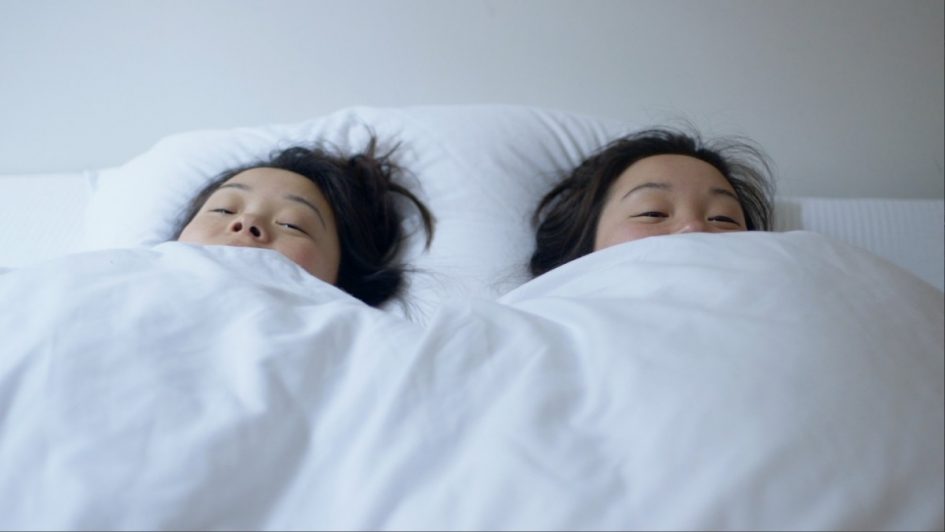On Tuesday, we watched the documentary about a young Korean-American woman, Sam, who was adopted from South Korea as a baby by a white American family. Sam was raised in an all white household with two older brothers that were their parents bio-children while Sam was the only non-biological child. But she was raised in a happy household and never felt like she wasn’t a part of the Futerman family. But everything changed when Sam received a message online from a stranger saying that his friend looked exactly like Sam — her life was forever changed in that moment when she found out she was not only a sister, but an identical twin.
The film was very moving and emotional for me — I am a very empathetic person so watching Sam documenting her journey to meeting Anaïs, her French-raised twin, was incredibly moving. The two young women immediately clicked in the film, their conversations were always full of laughter and I began to see the importance of having that feeling of solidarity especially as they did as adopted children. Growing up with my own older sister, I never knew what it was like to feel alone or left out because my mom always made my sister and I hang out, or she would make my sister give me rides when she was 16, or forcing the four of us (my mom, dad, sister, and myself) on family vacations where all we had was each other. The film really captured what it was like for both Sam and Anaïs to grow up in households where they were not like everyone else. Though Sam had an easier time, being raised in the United States where mixed race families are more common as well as having two adoptive brothers, Anaïs described a different life where as an only child she felt lonely and angry growing up, not feeling like she fit in to predominantly-white France. The two found each other and found a great sense of solidarity in their loneliness and otherness.
The film explored not only the relationship of the twins, but it showed the cultural differences between the two: where Sam was outgoing and friendly, Anaïs was more reserved; Sam was more openly emotional and compassionate while Anaïs seemed more level-headed and objective. Not only were these differences part of the girls’ separate personalities, but also the environments they grew up in. For Sam, being outgoing was second nature so being an actress was an obvious choice in her career where she could branch out more and explore that side of her in LA; Anaïs was far more reserved, speaking on a lonely childhood where she felt isolated and different but was still creative and energetic and thus put those creative tendencies to good use with fashion design.
One of my classmates, during our quick seminar after the film, noticed how each of the twins seemed to take after their foster mothers — Sam, the more outgoing of the two, was fostered by a very happy and extroverted Korean woman while Anaïs and her foster mother were more quiet and reserved with their emotions. It seems that the product of the twins’ personalities had a lot to do with nurture over nature and the type of people they were being raised by.
The film also showed Sam and Anaïs as they attempted to reconnect with their birth mother, but having no luck with getting contact but they showed they were stronger together and were able to accept and forgive their mother’s silence because they had each other.
